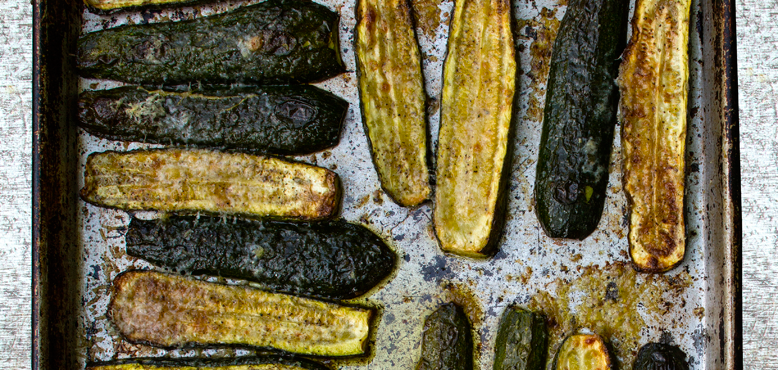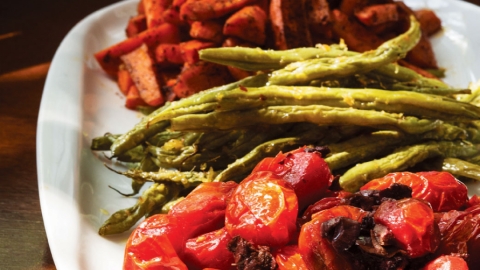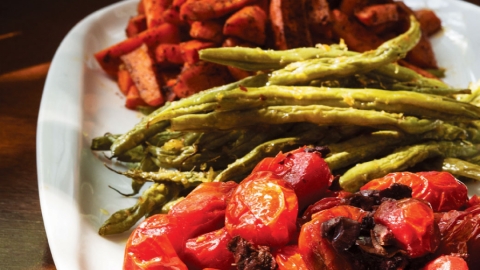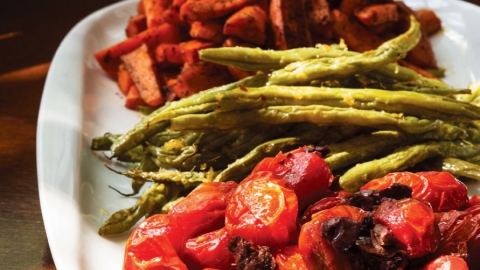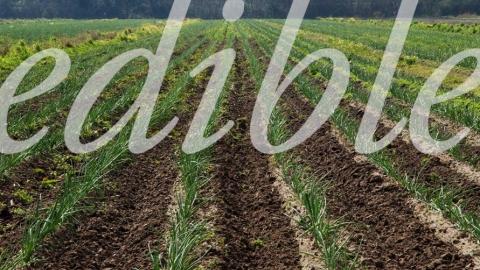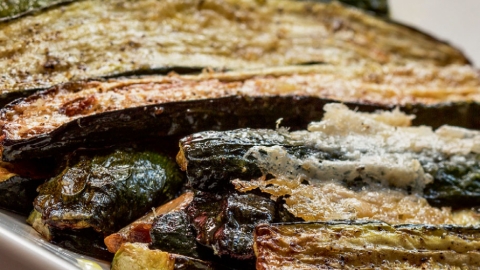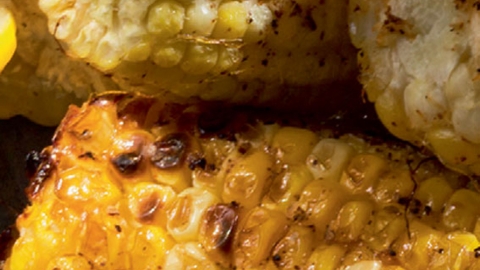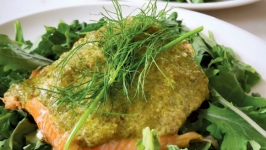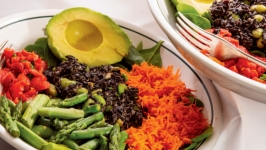Cooking Fresh: A Light Touch
Great chefs often claim that they just try to stay out of the way and let quality ingredients speak for themselves.
During summer, we can all be great chefs as fresh, recently picked, local ingredients start rolling into farmers’ markets and ripening in our gardens. Starting with greens and asparagus, through green beans and squash, corn and tomatoes, potatoes and cabbage and okra, our gardens and growers give us many great ingredients that require little or no eff ort to prepare them for the table.
As each vegetable makes its first appearance, we may be desperate to eat it plain, raw or with just a little salt or dressing. But as the weeks pass and the harvest keeps coming, we think of different ways to use them.
Still, simplicity is best. Start with a roasting pan, salt and a little oil and you can’t go wrong.
I would argue that there is no better roasted vegetable than cherry tomatoes. Their skins pop, their juices ooze and concentrate, almost into a sauce. The juice at the edges of the sheet pan gets a little brown, adding more flavor. Toss in herbs, or garlic, cheese or olives.
Nearly anything improves with roasting. If you weren’t around to eat a Brussels sprout in, say, 1970, count yourself lucky. Back then, they were nearly always boiled before they were served and, really, couldn’t be given away. These days, a good blackening in the oven has made them something to plan dinner around.
The same can be said for okra. And green beans. Nothing’s needed to make corn more popular, but a dry roast in the oven that browns some of the kernels makes it delicious in yet another way. Beets, peppers, eggplant, cabbage, potatoes, even hardy greens all improve with roasting.
Roasting requires a wide, shallow sheet pan, about 18 inches long and 13 inches wide. A little olive oil, some salt and/or pepper may be all you need to complete the dish.
But if you’d like to add a little something, maintain a minimalist’s attitude: Limit yourself to one or two ingredients. It’ll keep your chef skills sharp while keeping dinner simple. Just the way it should be.
The choice of additions is up to your aesthetic and your pantry, from Korean red miso paste to pomegranate molasses, or any of the legions of pre-prepared seasoning and sauce combinations now in the supermarket.
And if you have mounds of vegetables, double the recipes and serve extras on salad, in Buddha bowls, in burritos, in frittatas. Stir them with beans and mayonnaise and load them into pita bread. Just be sure to grab another sheet pan to keep vegetables in a single layer with some room around them.


